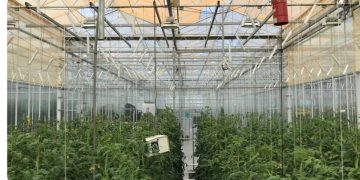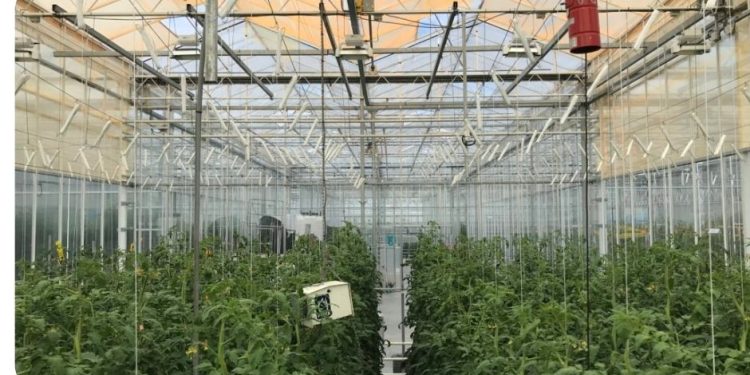UbiQD Inc., a New Mexico-based nanotechnology development company, announced Dec. 2 that it has been awarded a Phase II Small Business Technology Transfer (STTR) contract by the National Aeronautics and Space Administration (NASA). The 24-month contract provides $750,000 in funding for UbiQD’s collaborative research and development with the University of Arizona’s Controlled Environment Agriculture Center (UA-CEAC) to further explore using quantum dots to tailor the spectrum of sunlight for optimized crop growth for in-space and planetary exploration missions.
In August 2018, UbiQD was first awarded a Phase I STTR contract as part of NASA’s strategic mission to advance capabilities in the area of space technology, food production, and more. The successful project demonstrated improved crop yields for red romaine lettuce. One of the light recipes used in the study was UbiQD’s luminescent greenhouse product, UbiGro, which resulted in a 13% increase in dry weight of the vegetable, as well as an 8% increase in leaf area.
“On long-duration space missions, where astronauts will need to make the most use of resources, boosting food production with this technology could be a ‘game-changer,’” said Gene Giacomelli, a professor of biosystems engineering at University of Arizona who leads the work at UA-CEAC. “There is definitely something positive in this material as well as the technology which UbiQD has implemented. I’m on their horse in this race.”
UbiQD has been developing its quantum dot agriculture films after receiving funding from Breakout Labs in 2017 to explore the concept. By efficiently providing an ideal light spectrum, UbiQD’s new UbiGro film is designed to promote vegetable production and accelerate plant growth. UbiQD has partnered with commercial greenhouses to install the UbiGro product in 15 locations across six countries and five U.S. states, including in its home state of New Mexico. Growing Opportunities, based in Alcalde, NM, is using UbiGro film to boost the fresh weight yield of tomatoes, and the company first released commercial data from this farm in November 2019.
“We are thrilled to continue our work with the University of Arizona and NASA to improve the light quality for plants grown in space,” said Matt Bergren, Principle Investigator and Chief Product Officer at UbiQD. “Our technology could not only help provide fresh fruit and vegetables to future astronauts on missions to the Moon or Mars, but also benefit growers here on Earth.”
UbiQD is a nanotechnology company based in Los Alamos, New Mexico that manufactures safe, high-performance, quantum dots and greenhouse materials. For more information please visit UbiQD.com and UbiGro.com.
The mission of the University of Arizona Controlled Environment Agriculture Center (UA-CEAC) is to develop economically, environmentally and socially sustainable agricultural systems that will provide food of high quality for helping to feed the world. Engineers and scientists focus on CEA production agricultural practices within greenhouses, growth rooms, and vertical farms. Learn more: https://ceac.arizona.edu/
The NASA STTR program is sponsored by its Space Technology Mission Directorate (STMD) and managed at NASA’s Ames Research Center in California’s Silicon Valley. STMD is responsible for developing the cross-cutting, pioneering, new technologies and capabilities needed by the agency to achieve its current and future missions. Learn more about the awards: https://sbir.nasa.gov/prg_selection/node/62898.
UbiQD’s quantum dot-enabled retrofit greenhouse film, UbiGro, deployed above rows of tomatoes in a research greenhouse in the Netherlands. Photo: UbiQD Inc.
































